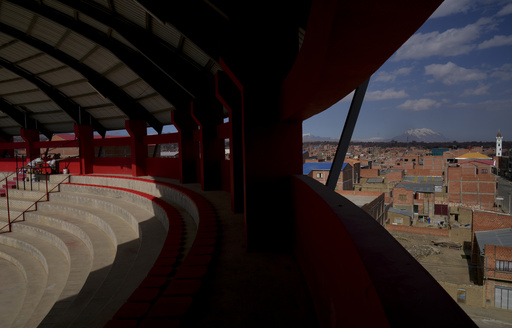Bolivia is shaking things up by moving their World Cup qualifiers to an even higher altitude in the hopes of boosting their performance. Normally playing in La Paz at 3,640 meters above sea level, the team will now compete in El Alto, at 4,150 meters. This change aims to provide an advantage due to the extreme altitude, with the team currently ranked second to last in the South American standings with one win and five losses.
New Bolivia coach Oscar Villegas will debut in the upcoming match against Venezuela, who recently had a successful run in the Copa America. Villegas plans to capitalize on the high-altitude stadium by selecting players accustomed to thinner air, with 80% of the squad hailing from regions like El Alto and La Paz.
The El Alto Municipal Stadium, opened in 2017, sits at a staggering altitude and offers a unique advantage to the Bolivian team. Despite the venue being smaller than La Paz’s Hernando Siles Stadium, the higher altitude in El Alto presents a new challenge for the players and visiting teams. The Bolivian Football Federation is observing how players adapt to the new stadium to determine if it will become a permanent home game venue.
On the other side, Venezuela is preparing for the high altitude by including players accustomed to such conditions in their squad. Additionally, the team is undergoing oxygen breathing exercises and acclimatization procedures in hyperbaric chambers. Not everyone is convinced that high-altitude matches are ideal for top-tier soccer, and there is limited research on playing at altitudes exceeding 4,000 meters.
Despite the significant altitude advantage, critics like Tite – coach of Brazilian club Flamengo – have expressed concerns about playing at extremely high altitudes. FIFA had previously criticized matches at La Paz’s height but backtracked on their decision due to objections from Bolivia. The upcoming match between Bolivia and Venezuela promises to be an intriguing test of how teams perform at such extreme altitudes.
Home Sport live Sport Bolivia changes World Cup qualifier venue to higher altitude to enhance performance.
